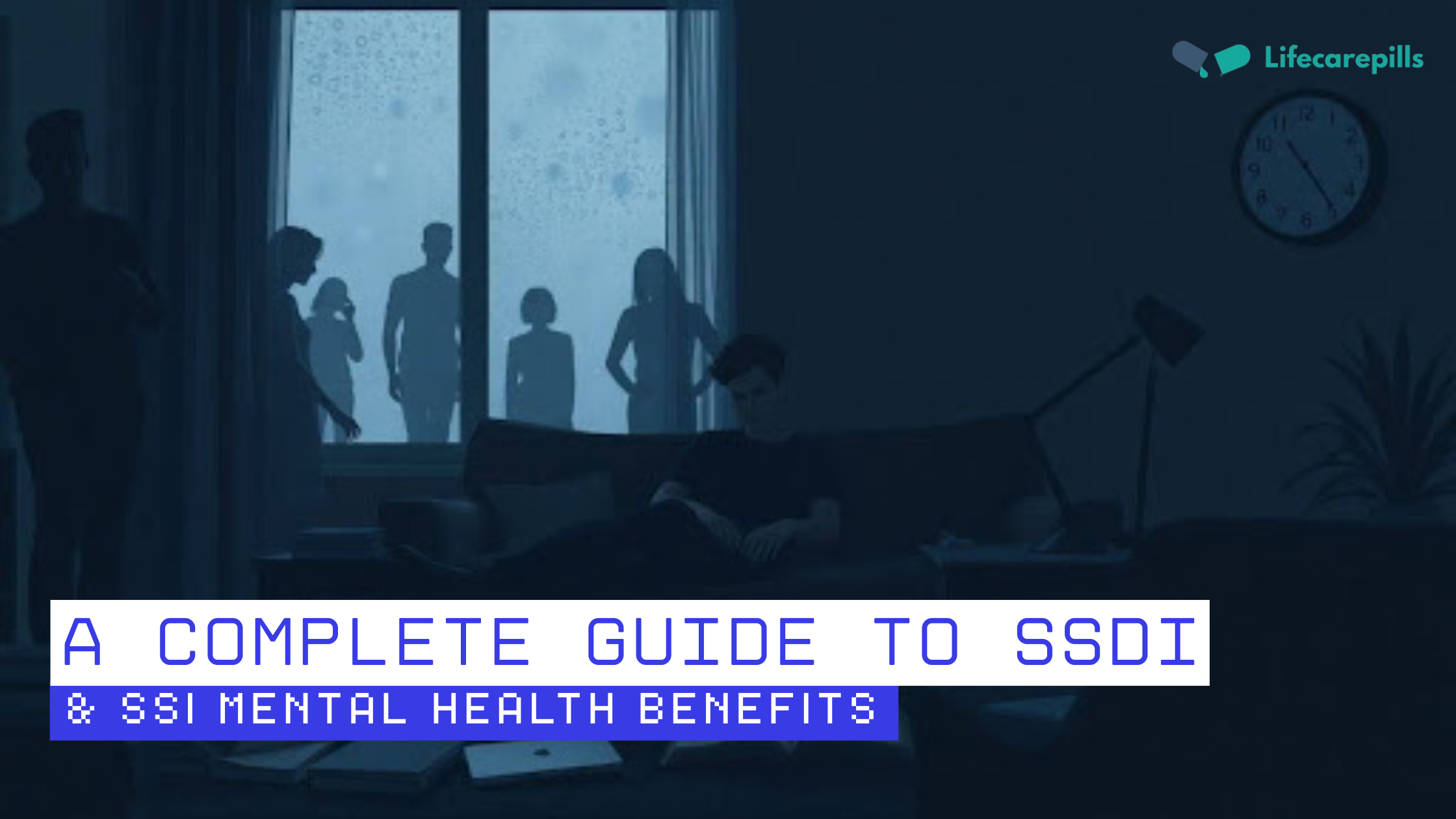Introduction
Numerous people suffer from depression and anxiety phenomena. Total millions of people continuously live with these disorders. These mental health conditions limit people from performing work activities or daily tasks and blocking them from enjoying their life. Your eligibility for disability benefits arises with severe mental health conditions. Many people wonder about the possible financial benefits they would receive from getting disability benefits because of their depression or anxiety. The knowledge of public assistance allows you to create more effective plans.
Thank you for reading this post, don't forget to subscribe!The criteria for disability claim approval relate to the extent of your symptoms combined with their impact on your performance in everyday life. The Social Security Administration together with other agencies conducts detailed examinations of each individual case. Medical records and treatment history as well as your daily difficulties are evaluated by these agencies. Knowledge about the rules will help you achieve better success in obtaining your benefits.
Understanding Disability Benefits for Mental Health Conditions
What Is Considered a Disability Under SSA Guidelines?
The Social Security Administration identifies disability as a condition which prevents work activities beyond twelve months. To meet SSA standards for disability one needs persistent signs of depression and anxiety which must surpass typical periods of melancholy and unease. Such medical conditions reduce your ability to carry out important daily tasks and maintain employment activities. The fundamental basis for demonstrating disability to the court relies on medical information. Medical experts alongside psychologists confirm which symptoms stop you from performing usual activities.
Types of Disability Benefits Available for Depression and Anxiety
There are mainly two benefits you can qualify for:
- Social Security Disability Insurance (SSDI): For people who have worked and paid into Social Security. Your work credits determine eligibility.
- Supplemental Security Income (SSI): For those with low income and limited resources, regardless of work history.
The eligibility guidelines for financial help between these two programs differ in addition to their payment amounts for beneficiaries. Knowing these distinctions about qualifications and financial awards gives you a better advantage in your application process.
How SSA Determines the Severity of Depression and Anxiety
Medical Listings for Mental Health Disorders
The Social Security Administration has particular documentation that specifies requirements for severe mental health disabilities. A social security disability analyst refers to Listing 12.04 for depressive disorder and Listing 12.06 for anxiety and panic attacks. These listings describe things like:
- Persistent feelings of sadness or panic
- Loss of interest in daily activities
- Trouble concentrating or making decisions
- Avoidance of social interactions
You need to show symptoms that meet specified severity requirements as per the listing criteria to gain program approval. The majority of disability claims fail when symptoms do not receive adequate documentation or fail to fulfill specified assessment parameters.
The Role of Medical and Psychological Evidence
Your doctor and therapist must document your health condition thoroughly in their records. Midterm needs to include your diagnosis as well as all treatment received along with a description of your limitations. Such continued treatment combined with proper documentation helps the SSA understand you truly face difficulties. The more consistent your records, the higher your chances of approval. Succinct documentation will both prevent delays in your claim approval and increase the risk of denial.
How Much Disability Can You Get for Depression and Anxiety?
Typical Benefit Amounts Based on Severity and Work History
On average, SSDI benefits hover around $1,400 per month. SSI benefits normally amount to $650 in payments per month while SSDI benefits generally reach $1,400 per month until income and living situation testing results in increased payments. Your work history affects your SSDI application requirements because you must have accumulated enough credits. The SSI benefits establish their limits through examination of income alongside resource-based factors.
The benefits amount changes according to what you earned in the past and your present financial condition. Local standards of living affect the typical disability benefit amounts in different cities.
Case Examples of Benefit Awards
- Example 1: A person with severe depression who can’t hold a job might qualify for the maximum SSDI amount, roughly $1,400 monthly.
- Example 2: Someone with mild anxiety who works part-time might get a smaller benefit or none at all.
- Example 3: A person with depression and other health issues might qualify for more, if combined, due to greater functional limitations.
Your symptom severity and daily challenges directly impact your benefit level.
Factors Affecting Disability Benefit Amounts
Severity of Depression and Anxiety Symptoms
The approval chances for a higher benefit become stronger when symptoms persist without letup and interfere with basic self-care activities and employment responsibilities. The most decisive factor in determining benefit levels is your ability to perform your work tasks. Can you focus? Do you have any ability to perform standard housekeeping tasks? Your claim processing and compensation payment are more likely to succeed when you have severe restrictions to your responsibilities.
Work History and Income
The SSDI benefits application debt to your past work record combined with your earning history. Higher benefits within Social Security are available to individuals who have paid a greater amount toward this program. SSI beneficiaries need to demonstrate that their earnings together with savings levels meet the program requirements. Small or no benefits from SSDI may be received by applicants whose household income is above certain thresholds.
Additional Factors Impacting Benefits
Additional health problems either physical or mental create more opportunities for qualification. The disability benefit amount may increase through having more health issues. Your daily activities represent the essential factor because such limitations confer higher benefit amounts in such conditions.
Read More: https://lifecarepills.com/is-moderate-anxiety-bad/
Tips for Maximizing Your Disability Claim and Benefits
- Gather all medical and therapy records. The more detailed, the better.
- Get your doctors to clearly describe how your symptoms limit your work and daily life.
- Keep a record of all treatments, medications, and how you feel daily.
- Consider consulting a disability lawyer or advocate—they know the tricks to get your claim approved.
- Understand the appeal process and never miss deadlines to request reconsideration if your claim is denied.
Conclusion
Living with depression or anxiety as conditions presents significant life challenges when they prevent you from working. The SSDI offers approximately $1,400 each month in benefits and the SSI provides approximately $650 monthly benefits to eligible recipients. Your application success depends on showing the medical establishment the extent of your condition along with its impact on your daily functioning. Health professionals together with proper documentation enhance your opportunity to obtain medical benefits approval.
Start your application immediately if you believe you match the qualifications. You need medical evidence that demonstrates your condition strongly along with professional guidance during the application process. The search for financial support is essential because it offers significant benefits therefore consider your choices organized your approach while securing the help you need.




